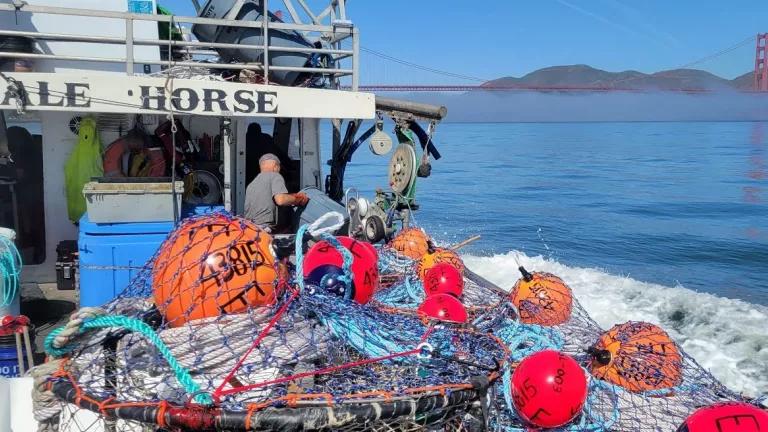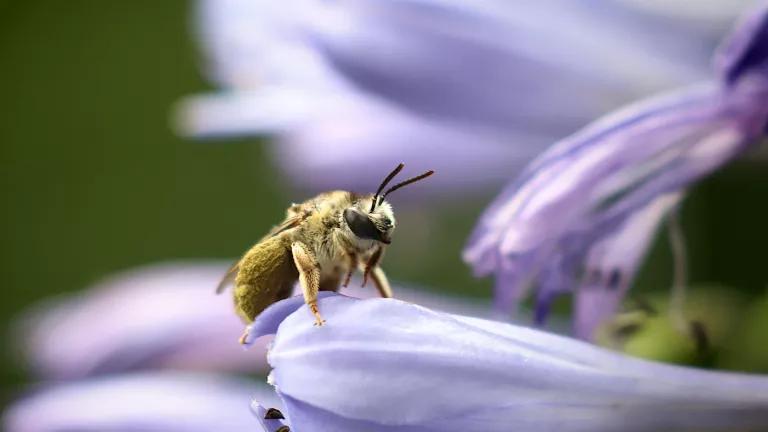Why SB 1 Must Ensure that CESA Applies to the Federal CVP
The bill’s authors and proponents, including NRDC, have worked long and hard to resolve the vast majority of concerns raised during the legislative session. Now, some are arguing that the bill should be stripped of its longstanding provision applying the State’s own Endangered Species Act to the operations of the federal Central Valley Project. Here’s why that’s a terrible idea.
The federal Central Valley Project (CVP) delivers an average of almost three times as much water as the State Water Project (SWP) and controls dams on key river systems—we simply cannot manage water and wildlife resources in California without ensuring that the CVP is honoring the state's priorities. The CVP is one of the world’s largest water projects, traversing more than 400 miles in California, from Redding to Bakersfield, and consisting of 20 dams and reservoirs, including three of the four largest in the state: Shasta, Trinity, and New Melones reservoirs. Many of these dams are on critical river systems for the state’s native fish. For example, Shasta Dam controls flows on the upper Sacramento River, which provides spawning and rearing habitat for winter-run, spring-run, and fall-run chinook salmon, as well as threatened green sturgeon. Trinity Dam's operations affect the fall and spring-run chinook that spawn and rear in the Trinity and Klamath Rivers. New Melones Dam on the Stanislaus River impacts habitat for spring and fall-run salmon, as well as threatened Central Valley steelhead.
In recent decades, with cooperative federal administrations of both parties, the CVP has been operated jointly with the State Water Project (SWP), which is operated by the state of California. The SWP delivers about 2.5 million acre-feet annually on average, mostly to cities in Southern California. In contrast, the CVP delivers more than 7 million acre-feet of water annually on average, about 75% of which is used for irrigated agriculture. Other than Oroville reservoir on the Feather River, the SWP does not operate major dams that directly affect flows and habitat.
Right now, the Trump Administration is weakening rules for operating the CVP that protect salmon, steelhead, sturgeon, and other native fish in California to “open up the water” for wealthy San Joaquin Valley agribusiness as directed by the President, regardless of what he calls “insane environmental rules.” These new rules are contrary to the direction that the State and previous federal administrations and numerous independent scientists have concluded are needed to protect several fish species from extinction.
This is where SB 1 comes in, providing California with the tools it needs to prevent science deniers in Washington D.C. from destroying our natural heritage. SB 1 would codify the state’s long-standing practice of applying California’s own Endangered Species Act applies to the CVP, ensuring the federal government honors the requirements by the state Department of Fish and Wildlife (CDFW) when operating its many large dams and diversion facilities.
The practice SB 1 would require by law, is not new; the state has administratively required the federal government to comply with CESA at least three times in the past. SB 1 would make it law, while providing for adaptability in implementation:
- Emergency regulation adopted by the Fish and Game Commission that “authorizes take of longfin smelt incidental to the coordinated operations of the SWP and CVP export facilities.” 14 Cal. Code Regs., tit. 14, § 749.3 (2008).
- Emergency regulation adopted by the Fish and Game Commission during the candidacy period for listing of spring run Chinook salmon under CESA, which states that, “Take of Sacramento River spring-run chinook salmon is authorized incidental to operation of the State Water Project facilities and the Central Valley Project facilities.” 14 Cal. Code Regs., tit. 14, § 749 (1997).
- 2012 Consistency Determination issued by CDFW to the U.S. Fish and Wildlife Service to authorize incidental take of spring run Chinook salmon that were collected as broodstock for the San Joaquin River Restoration Program pursuant to section 2080.3 of the Fish and Game Code.
Today, the attacks on California’s native species are much greater than in the past, with the Trump Administration ignoring scientific limits to protect listed fish throughout the Central Valley. And the threat is imminent, requiring quick and strong action from the state. For example, the Trump Administration has proposed to weaken Delta fall outflow requirements (called “Fall X2”) that apply under both the 2008 biological opinion issued by the U.S. Fish and Wildlife Service as well as CESA limits applied by CDFW. In August 2019, the Bureau of Reclamation released an environmental assessment under NEPA for their proposal to weaken the Fall X2 requirement, including proposing to modify the operations of state facilities (Suisun Marsh Salinity Control Gates). To date, the state has not taken any action to ensure that this requirement that provides important rearing habitat for delta smelt will be met, even though the requirement kicked in on September 1.
Meanwhile, the Trump Administration’s rewrite of the biological opinions on how the CVP impacts California’s fish and wildlife are due any day now. Like most observers, the state expects those opinions to lack critical protections, which is why DWR is seeking a stand-alone CESA permit. But, to date, the state has not required the CVP to submit its own application for a CESA permit, nor does the state appear to be planning to require one from the CVP. Instead, the Department of Water Resources issued a Notice of Preparation under CEQA that would seek a permit under CESA solely for “the operations of the SWP in the Delta.” Similarly, staff with CDFW and DWR have repeatedly confirmed that this permit would not authorize incidental take under CESA for operations of the federal Central Valley Project, despite the coordinated operations of the projects and the fact that DWR diverts water that has previously been stored in federal facilities, like Shasta Dam.
Without seeking a state CESA permit from the federal CVP, California simply cannot do its job to protect listed salmon and other species from extinction. Too many facilities and too much water is controlled by the federal CVP to allow the SWP to provide adequate protections on its own. In addition, without applying CESA to the CVP, the southern California cities that are primarily served by the SWP would take the brunt of higher CESA protections and limits on water deliveries, rather than sharing those obligations with the agricultural entities primarily served by the CVP.
The existing language in SB 1 would ensure that California will continue to protect the state’s resources from junk science and not allow the federal CVP to avoid its fair share of those protections. It should be passed intact.



